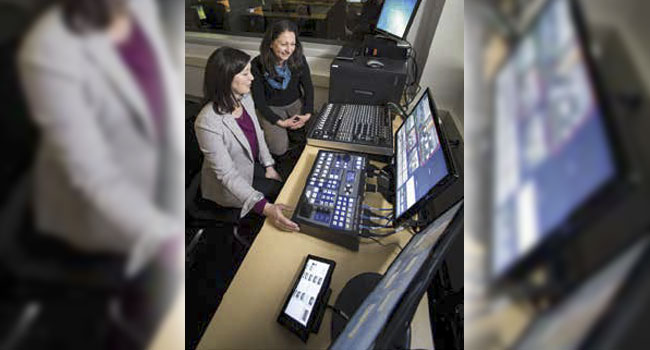
Seamless Integration
Integration between event management, HR and resource-planning platforms form core of installation
- By Mitchell Kane
- Nov 01, 2015
Designed to a be a state-of-theart
facility for students and
faculty members at Oregon
State University, Austin Hall
could represent one of the
most unique systems integration
projects within the higher
education market in the United
States. The 100,000-square-foot
building, which opened in the
fall of 2014, seamlessly integrates
building access control
into a single data management
solution that enables
school officials to streamline
ingress and egress, and also
allows students and staff to
reserve one of 21 project
rooms in the facility simply by
using their existing credential.
In addition to the project
rooms, the building features
10 classrooms, 10 conference
rooms, IT closets, a four-room
research suite, a mailroom
and several event spaces.
To help manage access control at Austin
Hall, including credentials for approximately
4,500 students each semester, Kirk Wydner,
operating systems network analyst for the
College of Business, and his team chose to
deploy Vanderbilt Industries’ Security Management
System (SMS). However, this would
not be an ordinary access control installation.
According to Wydner, the system, installed
by their security systems integrator Chown
Security, had to not only work with existing
HID Global identification cards used by students
across campus, but it also had to have
an easy-to-access user repository.
“A key feature of Vanderbilt that really
helped us was the ability to add in userdefined
fields because we needed to have our
own unique key,” he said.
Another key part of the SMS integration,
according to Wydner, was the fact that his
team could specify a set of areas within the
facility and create access rules based on those
sections, which allowed the system to clear
the most technically demanding challenge
presented by the project—integrating with
the facility’s data management solution.
Interoperability with Other
Software Platforms Critical
The SMS system was but one part of a larger
solution installed at Austin Hall to accomplish
a much more ambitious goal: to have a
completely interoperable access and room
reservation system. To accomplish this, Wydner
and his team installed the Vanderbilt VI
Connect Data Management Engine (DME).
VI Connect would integrate data from SMS,
along with several other enterprise software
solutions employed at the facility, including
an event management system from Dean
Evans and an enterprise resource-planning
platform from Ellucian.
“We didn’t know quite where to begin,”
Wydner said. “We knew that we needed to get
all of the user data—our faculty, staff members
and students. We needed some way of
defining who is taking a college business class
and which system we were going to pull that
out of, whether that’s going to be our central
student repository, active directory or if we
were going to go off of Salesforce.”
Wydner said the university decided the best
way to bring this information together was to
enter it into Salesforce. He started a separate
project focused on integrating the identification
numbers from the campus HID cards into
their Salesforce database. Aside from that, the
team also had to figure out a way to format the
data from Salesforce so that it would be recognized
by the Vanderbilt SMS and Dean Evans
EMS solutions.
By using the VI Connect platform, students
are now enrolled into SMS automatically
based upon the information entered into
the Ellucian ERP system. The successful integration
of these systems would not have been
possible, however, without some of the unique
features provided by Vanderbilt SMS. SMS
has a unique way of combining the access levels
of students and staff members with their
respective rights and privileges through a
process known as nesting, which enabled the
school to use the system in a way that others
have not in the past.
Integrated System Provides
Peace of Mind
Once the system was fully installed, Wydner
and his team were provided with in-depth
training by Vanderbilt, which made learning to
use SMS a breeze. “The Vanderbilt team did a
great job covering all of the bases and making
sure we had the information down pat before
handing the system over to us,” Wydner said.
Wydner said the decision to implement an
automated lock system at Austin Hall saved
significantly on time and manpower. Now, the
school can track who had access to a room in
the event anything goes missing.
A System for Future Expansion
While the deployment is still in the infancy
stages, there have already been discussions
with the school’s College of Engineering and
the Memorial Union Building about the possibility
of expanding the system to their facilities.
The feedback provided by students and
faculty has been overwhelmingly positive.
“The main thing that our faculty and students
enjoy about the integration is that they
can just walk up to a project room or a meeting
room, [and] tap their OSU ID on the Schlage
lock. It then opens up, lets
them in and it also gives
them an automatic onehour
reservation on the
room,” Wydner said.
This article originally appeared in the November 2015 issue of Security Today.